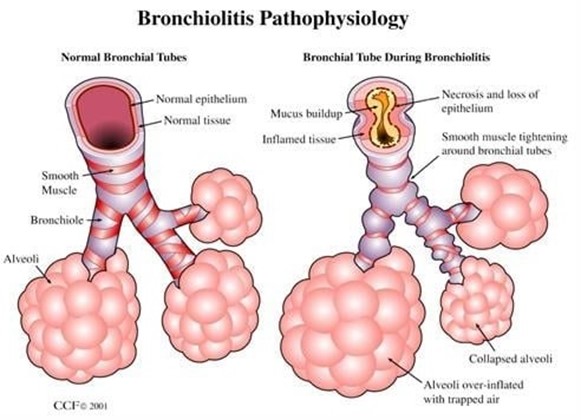A 3-month-old with bronchiolitis is brought to the clinic experiencing irritability and poor oral intake. Which finding should alert the practical nurse (PN) that the child is in acute respiratory distress?
Flaring of the nares.
Resting respiratory rate of 35 breaths/minute.
Bilateral bronchial breath sounds.
Diaphragmatic respirations.
The Correct Answer is A
Flaring of the nares, or widening of the nostrils, is a sign of respiratory distress in infants. It indicates that the child is working harder to breathe. This finding should alert the practical nurse (PN) that the child with bronchiolitis is in acute respiratory distress.
A resting respiratory rate of 35 breaths/minute (B) is within the normal range for a 3-month-old infant. Bilateral bronchial breath sounds (C) and diaphragmatic respirations (D) are not specific signs of acute respiratory distress in infants.

Nursing Test Bank
Naxlex Comprehensive Predictor Exams
Related Questions
Correct Answer is B
Explanation
If the client in active labor expresses a desire to empty her bladder and her vaginal exam is unchanged, the practical nurse (PN) should assist her up to the bathroom. An empty bladder can help facilitate labor progress.
Reviewing the fetal heart rate pattern (A) is important, but it is not the most appropriate action in response to the client's request to empty her bladder. Checking the perineum for changes in "show" or discharge (C) is also important, but it is not the most appropriate action in this situation. Obtaining a straight catheter kit to empty the client's bladder (D) may be necessary if she is unable to empty her bladder on her own, but assisting her up to the bathroom should be attempted first.
Correct Answer is C
Explanation
A positive indirect Coombs' test indicates that the mother has developed Rh antibodies against the baby's Rh-positive blood. This finding can result in hemolytic disease of the newborn, which is a condition in which the mother's Rh antibodies atack the baby's red blood cells, causing destruction and potential anemia.
The baby may require phototherapy for physiologic jaundice, but the Coombs' test result indicates a different issue.
The presence of an infectious blood-borne disease cannot be determined from this test.
The mother may still need Rho (D) immune globulin injections after delivery of an Rh-positive baby.

Whether you are a student looking to ace your exams or a practicing nurse seeking to enhance your expertise , our nursing education contents will empower you with the confidence and competence to make a difference in the lives of patients and become a respected leader in the healthcare field.
Visit Naxlex, invest in your future and unlock endless possibilities with our unparalleled nursing education contents today
Report Wrong Answer on the Current Question
Do you disagree with the answer? If yes, what is your expected answer? Explain.
Kindly be descriptive with the issue you are facing.
